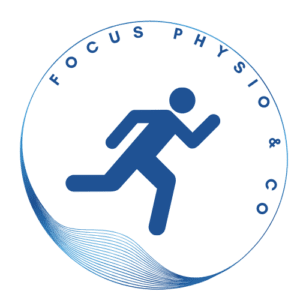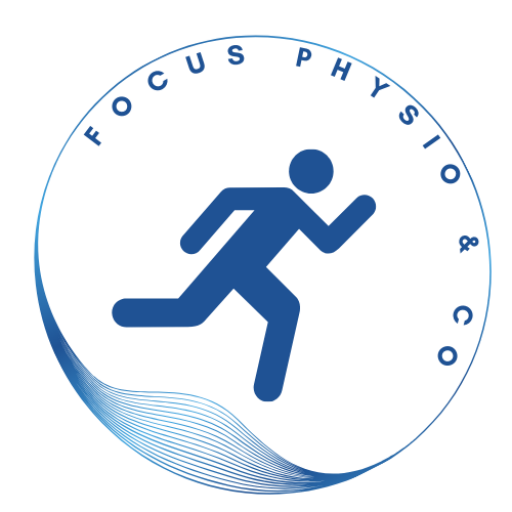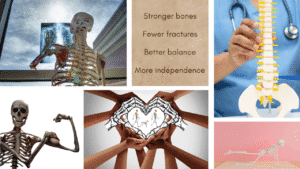If your child tumbles more than they walk, this one’s for you. (If you would rather watch/listen than read, this link is for you.)
At Focus Physio & Co, we see a lot of gymnasts, from little pocket rockets to elite-level athletes – and the one thing they all have in common? They really don’t want to stop training. That’s why we’re so passionate about early intervention and injury prevention. Most injuries we treat in the clinic aren’t from a single crash landing, they’re from overuse. So, let’s walk through what injuries we see most often, how to spot them early, and how to keep kids tumbling safely for the long run.
First, What Does a Physio Actually Do?
Physiotherapists are trained to assess, diagnose and treat injuries, including sports injuries — no doctor referral required. We can also refer for imaging (X-rays, MRIs, ultrasounds) if needed, or help coordinate care with a GP or specialist. Think of us as your frontline problem-solvers for anything musculoskeletal, from ankle pain to growing pains.
When Should You See a Physio?
Here’s what we tell our gym families: don’t wait until something breaks. Especially if your athlete trains more than 10 hours a week.
These are the signs it’s time to book an appointment:
- Pain that lasts through 2-3 training sessions
- Pain that’s persistent, in the same location, and doesn’t improve with rest
- Limited flexibility or range of motion – particularly during growth spurts
- Changes in technique – twisting, landing or compensating differently
- Tightness, stiffness or discomfort that feels off, even if it’s not full-blown pain
Getting on top of these early can prevent weeks or months off training and help kids keep doing what they love.
Most Common Gymnastics & Tumbling Injuries
Here’s a quick rundown of the injuries we see most in our clinic:
- Overuse Injuries (about 40% of all cases) – these are gradual. Think “niggle that turns into a problem”:
- Ankle impingement: pain at the front of the ankle from repeated jarring landings
- Sever’s disease: heel pain related to growth plate inflammation
- Osgood-Schlatter’s & Sinding-Larsen-Johansson syndrome: knee pain from growing faster than your muscles can keep up
- Shin splints & tibial stress fractures: caused by repetitive jumping or tight calves
- Lumbar stress fractures: common in hyper-flexible, high-load athletes. (Early signs often missed)
- Trauma Injuries
- Fractures (toes, legs, wrists) from awkward landings or falling out of skills
- Concussions – yes, even in tumbling. Particularly if landing backwards or on the head/neck
- Wrist injuries – including ganglion cysts from repetitive loading during takeoff positions
- The ‘Taboo’ Topic: Bladder Control
Loss of control during tumbling, especially around age 12–13, is surprisingly common and totally treatable. Women’s health physios (like the team at Her Health Physiotherapy) can help without shame or stigma.
Injury Prevention Strategies That Actually Work
Here’s what we know makes a difference for both short-term safety and long-term athlete development:
✅ Load Management
During growth spurts, reduce training volume to accommodate changes in body structure and centre of gravity. Muscles grow slower than bones — give the system time to catch up.
✅ Don’t Hide Injuries
Early disclosure = less time out of the gym. Encourage kids to speak up when something feels off.
✅ Prioritise Recovery
That means:
- Sleep: 9–10 hours a night for most 8–16 year olds
- Active rest between sessions
- Cross-training to reduce repetitive load
✅ Respect the Warm-Up
Coaches are doing their bit. Make sure athletes are actually engaging with the warm-up instead of going through the motions.
✅ Nutrition Matters
Inadequate fuel can lead to stress fractures and poor recovery. If needed, seek advice from a sports dietitian, especially during high-load periods or puberty.
Final Word: Early Action Saves Seasons
If something’s sore, different, or just not quite right, don’t wait for it to become an injury. Prevention is always easier than rehab.
And remember: physios aren’t here to bench your child, we’re here to help them stay in the sport they love, safely and for longer.
Author: Emily Waugh (Physio)





